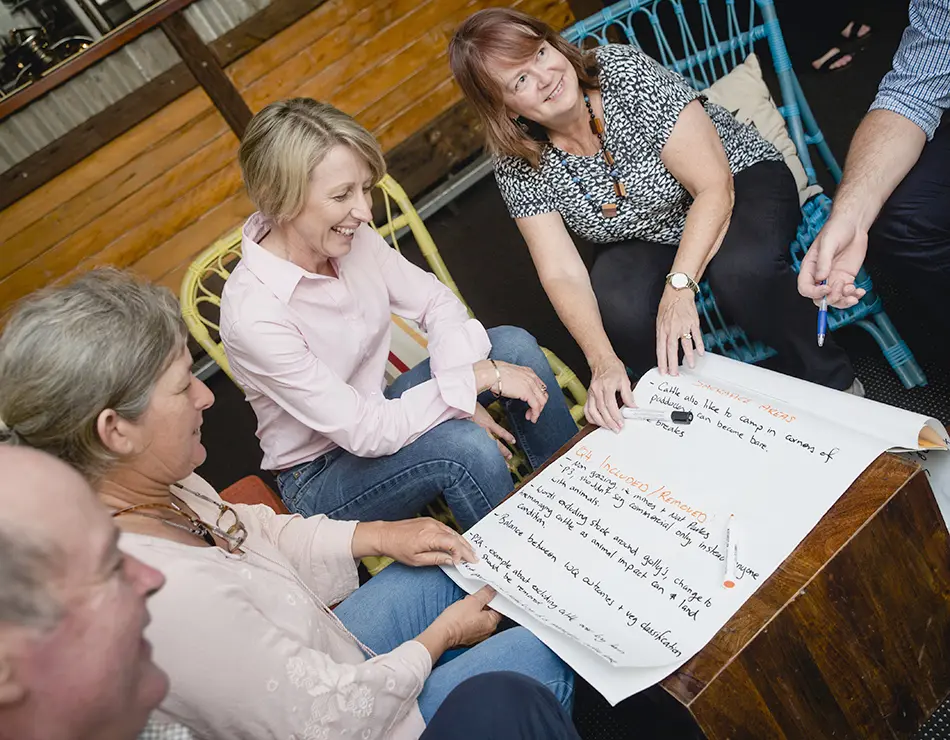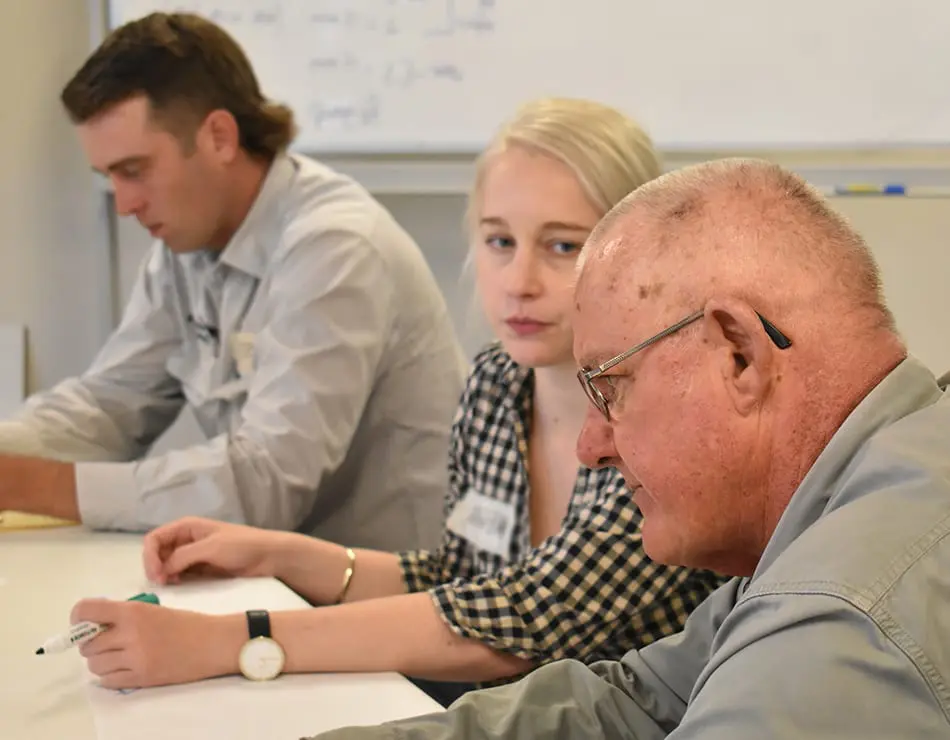
Glenlea Station grazier Peter Andersen makes a points during the reef regulations meeting held in Bowen last year.
Policy engagement a cornerstone of the LDC
THE LDC project facilitates and fosters grassroots input into policy formulation and implementation.
LDC has, through roundtable conferences and stakeholder meetings, given graziers and others the opportunity to directly affect policy.
REEF REGULATIONS
BBB graziers had significant and meaningful input in the design of the draft reef regulations before they were passed as law in September 2019. (The Environmental Protection (Great Barrier Reef Protection Measures) and Other Legislation Amendment Bill 2019).
This included:
- Changing the original 12-month implementation time-frame to be staged over three years.
- Graziers desire to see compliance effort focus on maintaining land that is in good or fair condition; and implementing measures to improve land in poor or degraded condition… was incorporated into the minimum grazing standards.
- Graziers request that the guidance material acknowledge that not all land and soil types responded in the same way throughout the reef catchments at different times of the year; and that some gully systems were too large for landholders to remediate by themselves… was accepted, and is included in the Grazing Requirements fact sheets.
POLICY ROUNDTABLE
A roundtable was held in Townsville February 2019 to:
- provide a platform to explore opportunities to influence existing and *proposed regulations to better support water quality outcomes; and
- to discuss the intent of existing and proposed regulations, and the impact of these regulations on grazing operations.
It brought together BBB graziers, representatives from NQ Dry Tropics, the Department of Environment and Science (DES), the Office of Great Barrier Reef (OGBR), the Department of Natural Resources Mines and Energy (DNRME) – including directors from relevant government departments (Vegetation, Reef, Water and Protected Plants).
A number of actions were prioritised, which led to two key outcomes:
- Improvements to the ‘blue dot’ Protected Plants Trigger map associated with the Protected Plants legislation, and including additional information about protected plants in the Vegetation Management Property Reports.
- Obtaining DNRME agreement to explore options for meeting reef protection measures and vegetation management requirements.
Exploring options to test an alternative approach for landholders to meet reef protection measures and vegetation management requirements.
BBB landholder, Bristow Hughes, of Strathalbyn Station, near Collinsville, who attended the LDC policy roundtable, subsequently submitted a proposal to OGBR highlighting challenges associated with improving land condition (weed control) to meet reef protection regulations at the same time as meeting vegetation management obligations.
DNRME agreed to investigate.
Representatives from DNRME, OGBR, Queensland Herbarium and NQ Dry Tropics will meet with Mr Hughes on-property, to better understand the problem and look for solutions.
The on-site investigation will be conducted as corona virus restrictions permit, and the outcomes will be communicated to the BBB community and roundtable participants.
This is an excellent example of how LDC is facilitating landholder engagement in policy development, review, and implementation in the BBB.
* The Environmental Protection (Great Barrier Reef Protection Measures) and Other Legislation Amendment Bill 2019 was in draft form when the roundtable was held.
COLLECTIVE THINKING… Working with sheets of butcher’s paper are (from left): Glenlea Downs grazier Peter Anderson, Mt Pleasant Station grazier and Landholders Driving Change Project Panel member Garlone Mouline, Glenalpine Station grazier Leanne O’Sullivan and Department of Environment and Science representative Leigh Smith.
At the roundtable conference are (from left): Strathalbyn Station grazier Bristow Hughes, Meghan Blackburn from OGBR, and Glencoe Station grazier Bob Harris.



